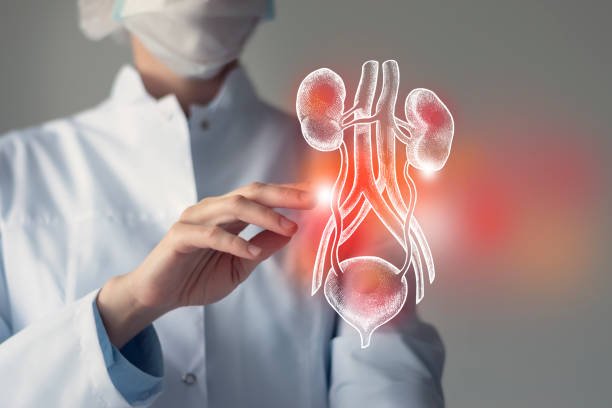On this page, we suggest ways in which anorexia can be prevented among adolescents
Anorexia nervosa, often referred to simply as anorexia, is a severe eating disorder characterized by a distorted body image and an intense fear of gaining weight, leading to extreme food restriction and starvation. Adolescence, with its whirlwind of physical, emotional, and social changes, is a particularly vulnerable period for the onset of eating disorders. This article seeks to suggest ways in which anorexia can be prevented among adolescents.
Ways in Which Anorexia can be Prevented Among Adolescents
Key strategies to prevent anorexia among adolescents in South Africa include providing comprehensive education on nutrition and body diversity, as highlighted by resources from the Eating Disorders Foundation of South Africa (EDFSA). Fostering positive self-esteem through initiatives like “The Girls and Boys Town” helps adolescents develop a holistic sense of self-worth. Media literacy, promoted by programs like Media Monitoring Africa (MMA), aids teens in discerning between real and altered media images. Encouraging open communication through platforms provided by the South African Depression and Anxiety Group (SADAG) allows adolescents to voice their body image concerns. Addressing bullying, as done by “Project Playground” in Cape Town, offers a bully-free environment. Accessibility to mental health resources, like the services of the Teddy Bear Foundation, provides therapeutic interventions. Finally, fostering supportive communities through interventions like the “Phola” project emphasizes shared experiences and mutual support. Collectively, these strategies offer a multi-dimensional approach tailored to the South African context.
Read: Why Anorexia is Prevalent in Young Females than Males
1. Comprehensive Education on Nutrition and Body Diversity:
Adolescents should be provided with comprehensive education on the importance of nutrition and the diverse range of healthy body types. Schools can play a significant role by incorporating lessons that emphasize the value of different body shapes and sizes and the nutritional needs of growing bodies.
Example: In South Africa, organizations like the Eating Disorders Foundation of South Africa (EDFSA) provide resources and educational materials to schools, emphasizing diverse body acceptance and the importance of nutrition.
2. Foster Positive Self-Esteem:
Help adolescents build a positive self-image that isn’t solely based on appearance. Engage them in activities that allow them to appreciate their bodies for what they can do rather than how they look. Sports, arts, and other extracurricular activities can foster a sense of accomplishment and self-worth.
Example: “The Girls and Boys Town” initiative in South Africa focuses on holistic development, helping children and adolescents develop a positive self-image beyond physical appearances through various activities and programs.
3. Promote Media Literacy:
In the age of social media and influencers, it’s crucial for young people to understand the difference between reality and the often-filtered world they see online. Workshops that teach adolescents to critically evaluate media messages can help them recognize unrealistic beauty standards and reduce body dissatisfaction.
Example: The Media Monitoring Africa (MMA) program educates young people on critical media consumption, helping them discern between real and altered images and understand the implications of media’s portrayal of ‘ideal’ bodies.
4. Encourage Open Communication:
Create an environment where adolescents feel safe discussing their fears, anxieties, and concerns about their bodies. Open dialogue with parents, guardians, and educators can help spot early signs of body dissatisfaction or disordered eating patterns.
Example: The South African Depression and Anxiety Group (SADAG) runs campaigns promoting mental health discussions within families and schools, aiding adolescents in voicing their concerns about body image and self-worth.
5. Address Bullying and Peer Pressure:
Bullying and peer pressure can significantly contribute to body dissatisfaction among adolescents. Schools and communities should implement strict anti-bullying policies and offer counseling and support for victims of bullying.
Example: “Project Playground” in Langa, Cape Town, provides a safe space for children and teens, offering after-school programs that not only focus on fun but also on creating a bully-free environment and fostering respect among peers.
6. Provide Access to Mental Health Resources:
Early intervention can play a critical role in preventing anorexia. Schools and communities should offer easily accessible mental health resources, including counselors and therapists trained in eating disorder identification and prevention.
Example: The Teddy Bear Foundation in Johannesburg offers clinical services and therapy for children and adolescents, ensuring they have a space to discuss potential body image concerns and other mental health issues.
7. Foster Supportive Communities:
Peer support groups, both in-person and online, can provide a safe space for adolescents to discuss their insecurities and challenges. These groups can be monitored by professionals to ensure that the conversation remains positive and constructive.
Example: The “Phola” project, meaning “to heal” in Zulu, offers therapeutic group interventions in several provinces, allowing adolescents to discuss their struggles in a community setting, emphasizing shared experiences and mutual support.
Read: Why Anorexia is Prevalent in Young Females than Males
Conclusion
Preventing anorexia among adolescents requires a multi-faceted approach, considering the myriad of influences that young people are exposed to today. By building supportive environments, promoting open communication, and ensuring access to proper education and resources, we can significantly reduce the risk of anorexia and promote a healthier, happier adolescence.
Read: Why Anorexia is Prevalent in Young Females than Males




